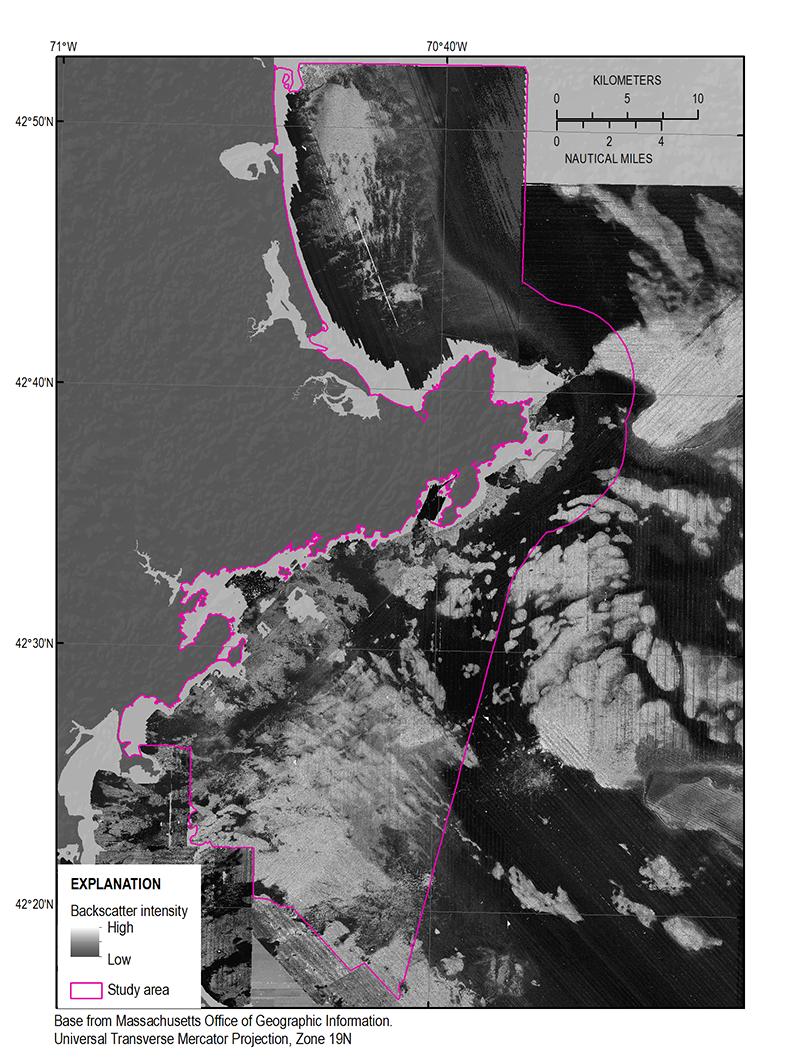U.S. Geological Survey Open-File Report 2015-1153
![]() / Title Page / List of Figures / Conversion Factors / Abbreviations / Abstract / Introduction / Methods / Results / Discussion / Summary / Acknowledgments / References Cited / Appendix — Geospatial Data / Citation Page /
/ Title Page / List of Figures / Conversion Factors / Abbreviations / Abstract / Introduction / Methods / Results / Discussion / Summary / Acknowledgments / References Cited / Appendix — Geospatial Data / Citation Page /

Figure 3. A composite backscatter image of the study area at 10-meter resolution, created from a series of published backscatter images (table 2). Areas of high backscatter intensity (light tones) have strong acoustic reflections and suggest boulders, gravels, and generally coarse sea-floor sediments. Areas of low backscatter intensity (dark tones) have weak acoustic reflections and are generally of finer grained material such as muds and fine sands. Regularly spaced striping is an artifact of the surveys.